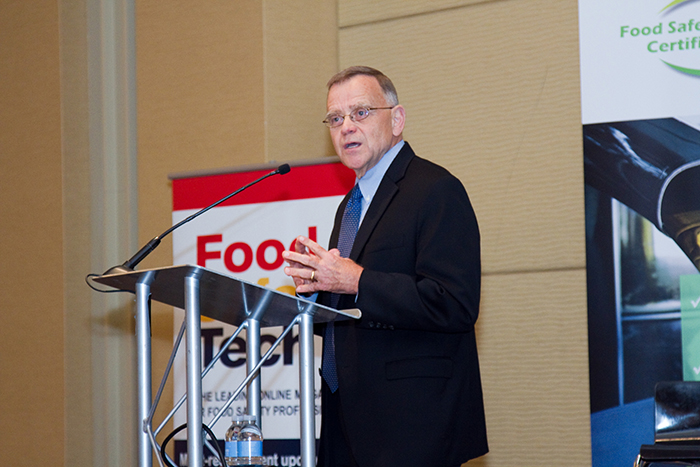With the signing of FSMA in 2011, wholesaler and retailer executives are now legally responsible for the safety of their supply chains. In addition, FSMA’s focus on prevention and its seven new rules requires retailers and wholesalers to collect, manage and store multiple documents from each vendor for compliance. These documents must be accessible upon FDA request within 24 hours and extend two years back. And here’s the kicker: Senior executives are now responsible for the compliance of their supply chain with FSMA.
At the Food Safety Consortium, Affiliated Foods Midwest (AFM) will talk about their preparation for FSMA compliance and decision to move away from their “home-built” and “highly manual” compliance system, which stored both soft and hard copies of vendor documents. With FSMA rules focused heavily on documenting preventive measures, AFM executive leadership assessed the company’s gaps and determined they needed to be more proactive. John Grimes, director of safety for AFM, estimated that at the start of the company’s journey, about 30% of vendors were non-compliant with the three records they required: Certificates of Liability with specified limits, Hold Harmless forms and W-9s.
“We knew compliance built on trust was not enough and wanted more business documents and regulatory records collected. We also needed to increase compliance, be more proactive, and so we were looking to automate our systems,” explains Grimes.
AFM decided to adopt the cloud-based Compliance Management System to proactively manage both business-related documents and FSMA-related records. Once implemented, the wholesaler’s non-compliance among vendors was reduced by 60% in the first 90 days through proactive alerts, automated exception reporting and focused, personal follow up.
On Thursday, November 19, Randy Fields and John Grimes will discuss “FSMA Compliance Really Starts With Knowing Your Supply Chain” at the Food Safety Consortium. LEARN MORE“With our prior system I could find a requested document within 24 hours, but with the cloud-based compliance management system, I can pull it up and instantly share it with an FDA agent even before they have a chance to leave my office,” says Grimes.
Document management at AFM is now much more proactive vs. reactive. The Compliance Management System automatically sends alerts to Grimes and the vendor when documents are missing, when insurance limits are too low, or when a document is due to expire. The system enables AFM to proactively manage more documents by vendor than ever before.
The active approach that our staff enables its customers to take in managing compliance is really its differentiator. Each customer is provided with a dedicated team to reach out to their vendors to speed enrollment and quickly address their compliance issues.
According to Grimes, as more retailers and wholesalers adopt this type of system, the vendor community will move more quickly to embrace solutions that will help them comply with FSMA.
























